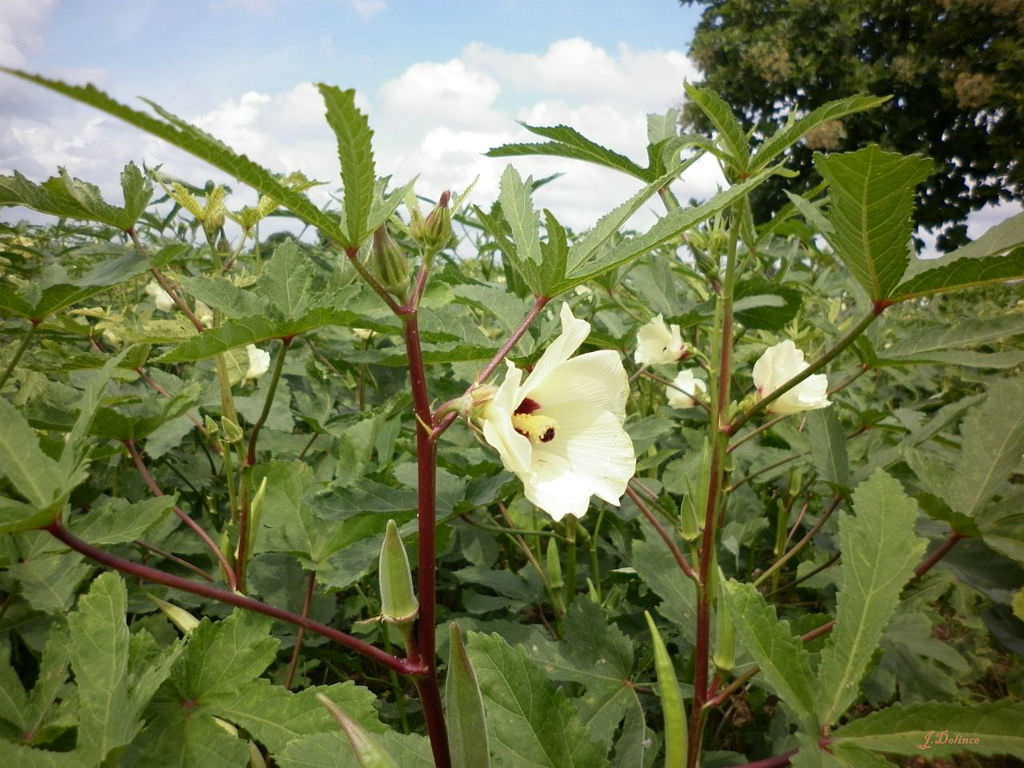
West Africa to the New World by way of the Caribbean islands. Still, the vegetable’s greatest fame would come via slaves taken from Okra had become a staple in two places with a lot of mouths to feed: India andĬhina. Before long, moving among various countries’ overseas colonies, That included missionaries, explorers, fame-seekers and profiteeringĬolonizers. Seeking monetary or spiritual enrichment, or some combination of both, a group Some exporting beyond the oceans occurred among those who came to Africa Throughout western and central Africa when they migrated out of Egypt around It’s the Bantu tribe that gets credit for spreading okra seeds The vegetableįound an early following among the Egyptians living in the fertile valley of With certainty about anything – in the part of Africa that today includesĮthiopia, Eritrea and the eastern, higher part of the Sudan. Historians tell us that okra originated – if such a thing can be established Tell you “No thanks.” This simply isn’t something our foods typically do. Outward like spider webs from okra as it cooks, often as not the person will Still, when you show someone the bright, shimmering clear strands that twirl The story, since versions of the word “gumbo” mean okra in more than one West Powerful thickening agent that makes them perfect for soups and stews,īeginning and ending with Louisiana’s iconic gumbo. Pods is, you might say, part of their charm. The root of the problem some people have with these otherwise attractive green Home region of the South doesn’t seem to stop anybody. Ingredient for my hometown of New Orleans, my home state of Louisiana and my People in my presence as being “slimy.” And the fact that it’s an essential Serving food, there’s only one ingredient that’s been regularly denigrated by Here are a few recipes to get you started.In three-going-on-four decades of writing about, talking about, cooking and You can find all of our okra varieties here.įrom the greens to the seeds, pickled to fried there are a number of ways to enjoy okra. The pods can be picked by hand or you can use a small set of pruning shears.įor best results check out our Okra Growing Guide. Pods often need to be harvested frequently when they’re about 2-4 inches long before they grow too large. Okra prefers rich soil but soil that’s too high in nitrogen can lead to a lot of leaf growth and little pod development. If you live in colder climate okra should be started indoors 2-3 weeks before your last frost date. Okra can grow up to 6 feet tall and should be grown 18 inches apart in rows 5-6 feet apart. If you’re considering growing okra do realize that it isn’t a small plant. The dried pods can be used in flower arrangements.The pods make an excellent thickener for soups and stews, like gumbo.Okra has a rich history and important culture.The plant’s stem is fibrous and can be used to make cordage or paper.this practice was used in the south during the Civil War. The seeds can also be roasted and ground and used as a caffeine free, coffee substitute. In the U.S.Okra seeds can be pressed and make a wonderful oil for cooking.The leaves are also edible and are often likened to beet or dandelion greens.Okra can easily be preserved for winter by making pickled okra.It certainly is a plant worthy of the attention.

Though it does well in hot climates and will tolerate drought, okra performs best in rich, moist soil.Ī resurgence of interest in local food and regional recipes has led to a renewed interest in okra. It’s a member of the mallow family, related to plans like hibiscus, cotton, and hollyhock. Okra was first brought to the Carribean and Southern United States by the slave trade sometime in the 1600s. Records of its cultivation in ancient Egypt date to over 3000 years ago! In the following centuries was spread throughout Africa, the Middle East, and Asia. Like many long cultivated plants, okra’s origins cannot be pinpointed but many historians believe it was first cultivated in Ethiopia.


 0 kommentar(er)
0 kommentar(er)
